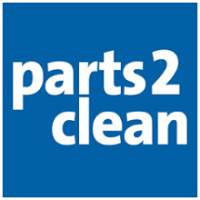Cleaning more efficiently – but how?

26.03.2013 09:26:46, Deutsche Messe AG
Stuttgart/Hannover, Germany. Manufacturing operations no longer face the question of whether manufactured components have to be cleaned. It is a matter of how the cleanliness required for flawless quality can be achieved quickly, efficiently and sustainably as part of a reliable process. From 22 to 24 October 2013 at the Stuttgart fairgrounds, parts2clean presents a complete overview of the processes, methods, media and measures for cost-effective cleaning that meets the prescribed requirements. The bilingual expert forum for this leading international trade fair also offers extensive expertise on configuring processes for industrial parts and surfaces cleaning so that costs are optimized and the needs of the market are met.
“If you are interested in the efficient cleaning of components, then our leading international fair parts2clean is the right place for you,” says organizer Oliver Frese, business unit leader at Deutsche Messe. “Nowhere else can you find comparably extensive offerings relating to industrial parts and surfaces cleaning.”
Whether a simple degreasing or a demanding cleaning task with residual soiling specifications – a cleaning process is efficient if the necessary cleanliness is achieved with high throughput at the lowest possible cost. The name of the game is a process optimally adjusted to the cleaning task. The important criteria are the material, size and geometry of the component, the type and quantity of the soiling, guidelines with regard to film or particulate cleanliness, along with throughput and the required flexibility.
Configure cleaning processes efficiently
In the cleaning of metallic components and surfaces, nearly all tasks can be accomplished with wet-chemical cleaning processes. The solvent power of the cleaning medium in use is the deciding factor for the operating costs, quality and stability of the cleaning process. This principle applies to the selection of the media: Like dissolves like. This means that solvents are normally used for mineral oil-based (non-polar) soiling, for example, from machining oils, grease and wax. Aqueous cleaners are usually used for water-based (polar) soiling from coolant and lubricating emulsions, polishing compounds, additives, salts, abrasion and other solids. They are available as pH-neutral, alkaline and acid media. Polar solvents and modified alcohols combine the advantages of aqueous and solvent cleaning due to their balance of grease- and water-soluble properties.
The choice of equipment features affects operating costs as well as the amount of the investment and in turn depends on the task. It would be worth raising at least the following points: How many tanks or dip tanks are required to achieve the results that satisfy the requirements? Is auxiliary cleaning equipment such as an ultrasound unit needed, and, if so, at what output? Should preservation measures be integrated into the equipment? Can the required cleaning results only be achieved through the use of a high-pressure pump and what pump output is generally required? What equipment for the care and preparation of the media ensures a long operating life for the cleaning device? What features does the equipment have to avoid heat losses and recapture heat?
Since drying is one of the most energy-intensive steps in the cleaning process, the question is posed: Must the parts be completely dry before the next production step or can the process function at reduced output, for example, by doing without a vacuum pump? Smart equipment controls contribute to energy savings if they can switch energy-intensive assemblies to a stand-by mode during work breaks or periods when no parts are available. It is worth looking at the labor costs required for the cleaning as part of the efficiency calculation. Can they be reduced with appropriate automation, such as automatic loading? The expense would indeed be incurred as part of the initial investment costs, but there would a pay-off as the equipment is used.
It is generally true that the greater the requirements for cleanliness, the higher the cost of cleaning. So it is worth determining whether the stipulated cleanliness for the particular part or production step is in fact essential. And naturally a reduction in the quantity of dirt introduced contributes to more efficient cleaning.
Solutions and expertise at parts2clean 2013
Exhibitors at parts2clean 2013 are presenting answers and solutions for efficient cleaning processes. As the only trade fair in the world exclusively focusing on the industrial parts and surfaces cleaning, parts2clean offers comprehensive expertise with its three-day expert forum. Lectures on the most varied topics relating to industrial parts and surfaces cleaning are simultaneously translated (German-English/English-German).
Further information and the interim list of exhibitors are available at www.parts2clean.de.
Messegelände
30521 Hanover
Germany
- Tel: +49 (0)511 890
- Fax: +49 (0)511 8932626 www.messe.de
parts2clean Stuttgart
05.10.2027 - 07.10.2027
professional visitors only
biennially